Highlights of Shanghai: 5 Days in China’s Biggest City
This past week took us one hour by bullet train from our “small” city of Hangzhou to the sprawling metropolis of 24.4 million people that is Shanghai, China. I visited Shanghai back in 2012 at the age of 13 as part of a school group – the trip to China was my very first time out of the country, and it sparked my love of travel that has made my life what it is now. I was very excited to have the opportunity to visit Shanghai again, and it did not disappoint. Here are some highlights from our trip:
The Shanghai Propaganda Poster Art Center
A massive collection of propaganda posters from about the last 100 years of China’s history is housed in an unassuming basement in a seemingly random apartment complex in the former French Concession area of the city. The collection of over 6000 posters is a private collection of Yang Pei Ming, from who we were fortunate enough to receive a tour from.
Not nearly all of the posters are displayed, but those that are give an interesting glimpse into the country’s history and the government’s control over art and information. The site of the museum is a little odd, but this is hands-down one of the most interesting museums in Shanghai, and one of the coolest niche art collections I have ever seen.
The Shanghai Jewish Refugees Museum
Global is great at taking us to places that you would never ever think of, and a great example of this is the Shanghai Jewish Refugees Museum. The museum is in the former Ohel Moshe Synagogue in the former Hongkou district of the city, and it highlights the journey and lives of over 20,000 Jewish refugees during World War II that were given refuge in the city of Shanghai.
The museum touts the heroism of Ho Feng-Shan, a Chinese diplomat in Vienna during World War II who disobeyed orders and issued visas to thousands of Jewish refugees. The museum told stories of frantic Jewish people running from consulate to consulate in Vienna, desperately searching for a visa that would allow them to exit Austria, and many found that visa that surely saved their lives in the Chinese consulate.
The museum speaks to the hardships of living in China, a country so vastly different from their own, and how many left China following the war, but it does a great job of highlighting the role Shanghai played in allowing these refugees to escape Europe when the circumstances were dire. This situation is a reminder of who history views as heroes and that sometimes rules are meant to be broken. As Martin Luther King once said, “an unjust law is no law,” and Ho Feng-Shang proved that when he shirked the rules and saved lives. His example is one we can learn from in the midst of a global refugee crisis.
Also, interestingly enough, Ho Feng-Shang may have been responsible for saving the lives of 16 Epsteins. The museum has a wall with all of the names of the refugees that landed in Shanghai, and 16 of those people share my last name.
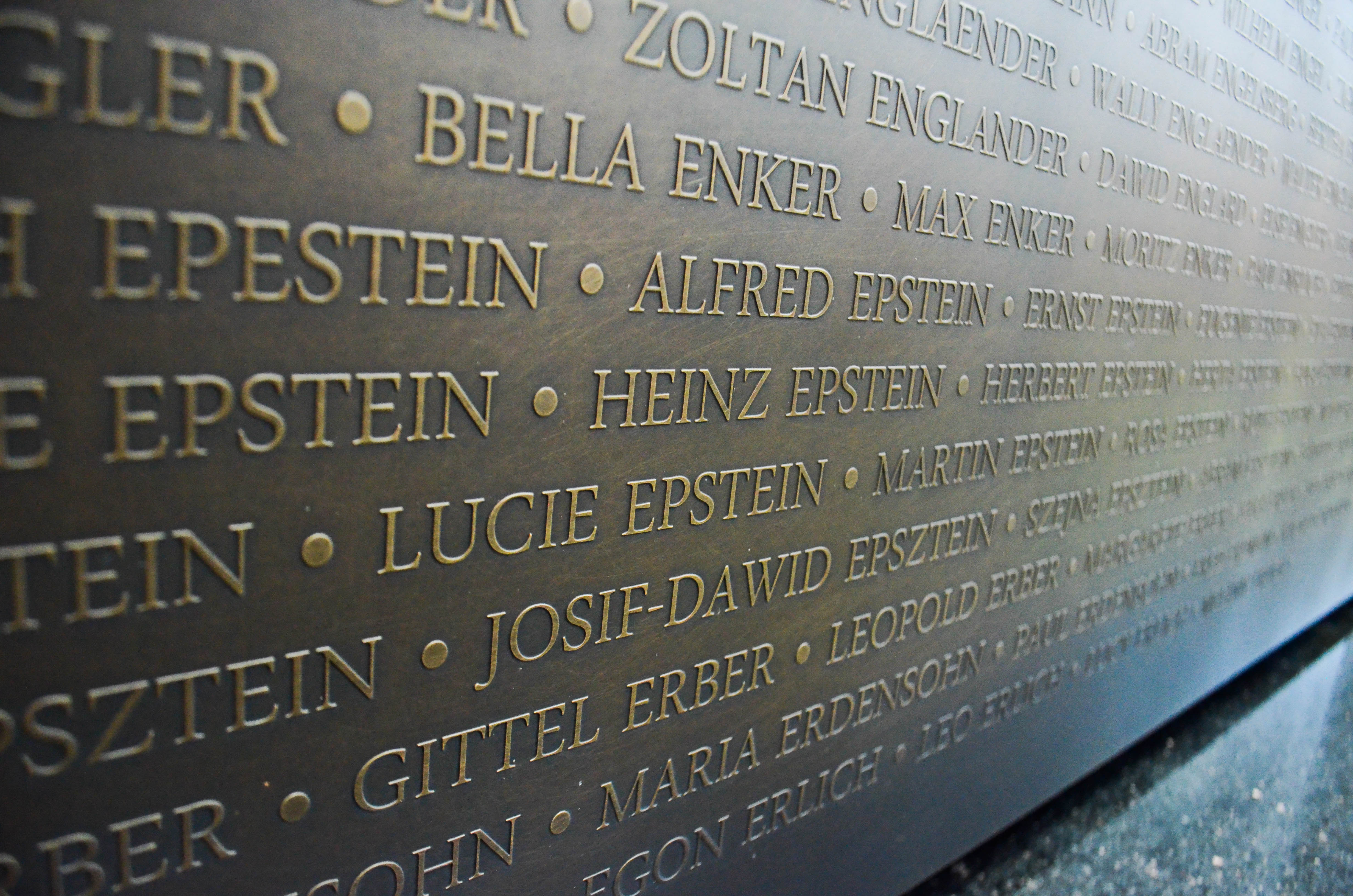
Names of Epsteins on the wall of names of Jewish refugees that came to Shanghai during World War II.
The Shanghai Urban Planning Exhibition Center
So it turns out that a lot of planning has to go into a city of 24.4 million people, and there’s an entire museum dedicated to it. The museum tells a bit of the city’s history as well as demonstrates a lot of what needs to be considered when making sure life for everyone in such a big city goes smoothly – transportation, space, waste management, the cultivation of culture, green initiatives, and more. Many of the displays are interactive and educational, and the museum’s claim to fame is its massive model of the entire city of Shanghai.
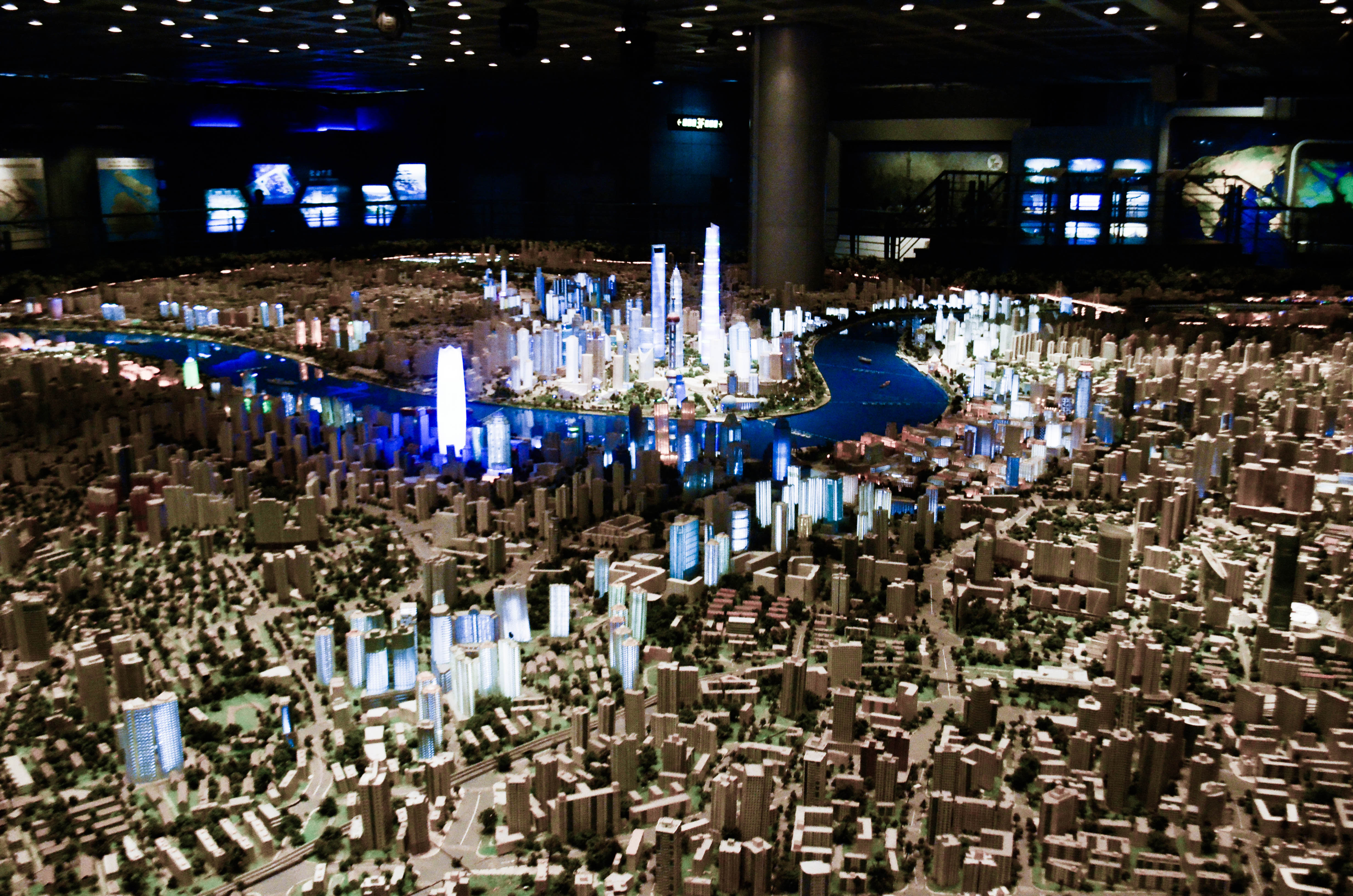
The scale model of the city in the Shanghai Urban Planning Exhibition Center.
The Bund
The Bund is a stretch of land along the river that was once the International Settlement where several foreign countries conducted business and had embassies. As a result, the area looks strongly European. The Bund is also the best spot for an incredible view of the gleaming skyscrapers of the Pudong district.
Unfortunately, the day we went to the Bund happened to be the day after China’s national day, so the holiday combined with perfect weather really brought out the masses. We were herded up to the waterfront walkway by the crowds and the shrill whistles of the large police presence there trying to control the flow of foot traffic.
Up on the walkway, we did our best to cram our way up to the front to get a group photo with the skyline. This was a vastly different experience to the one I had back on dreary summer day in 2012, when the Bund was mostly empty and we easily got our group photo.

The Global China Center kids and our professor, Dale, on the Bund.
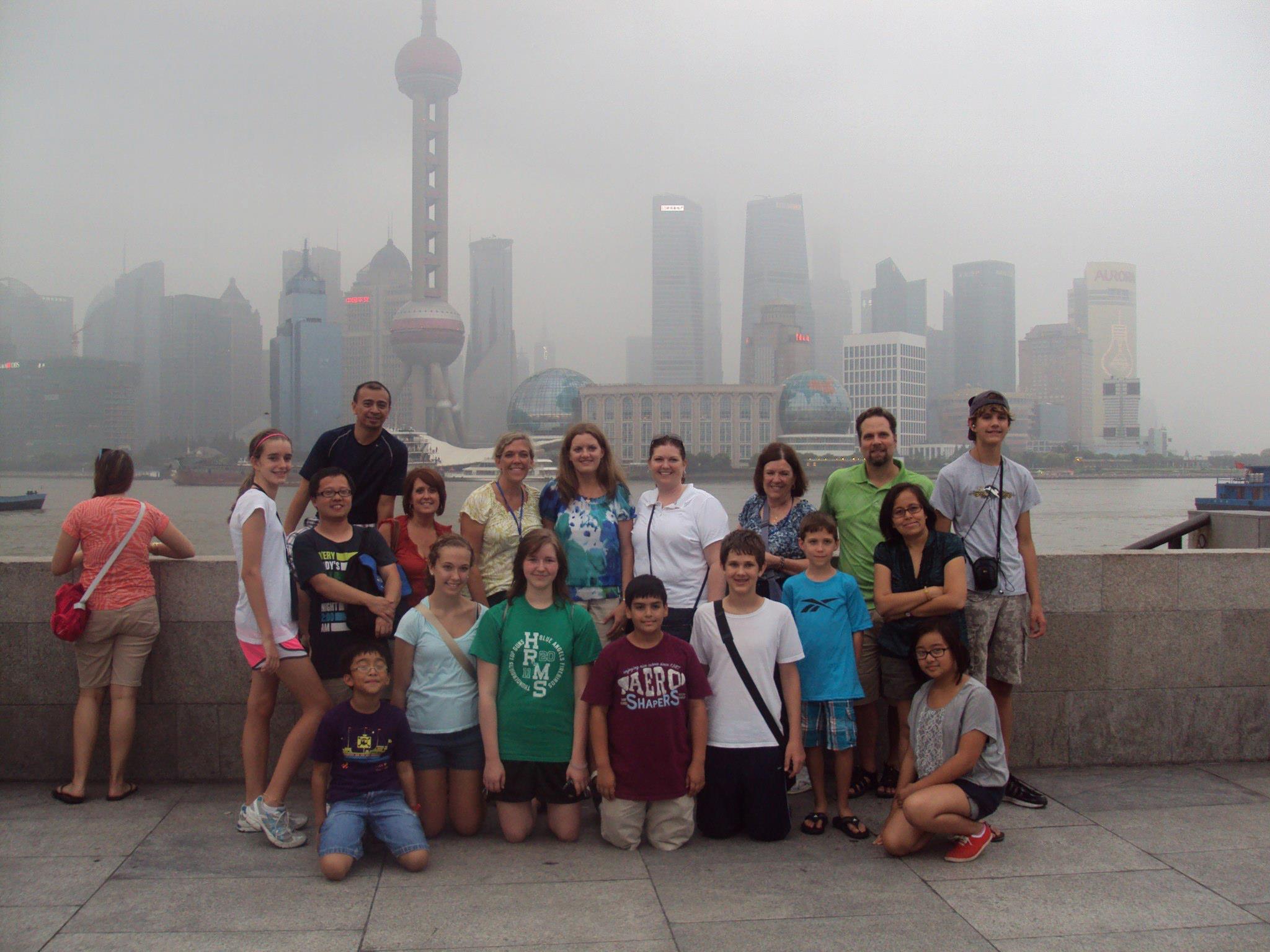
Me on the Bund in 2012 with our group from Harris Road Middle School.
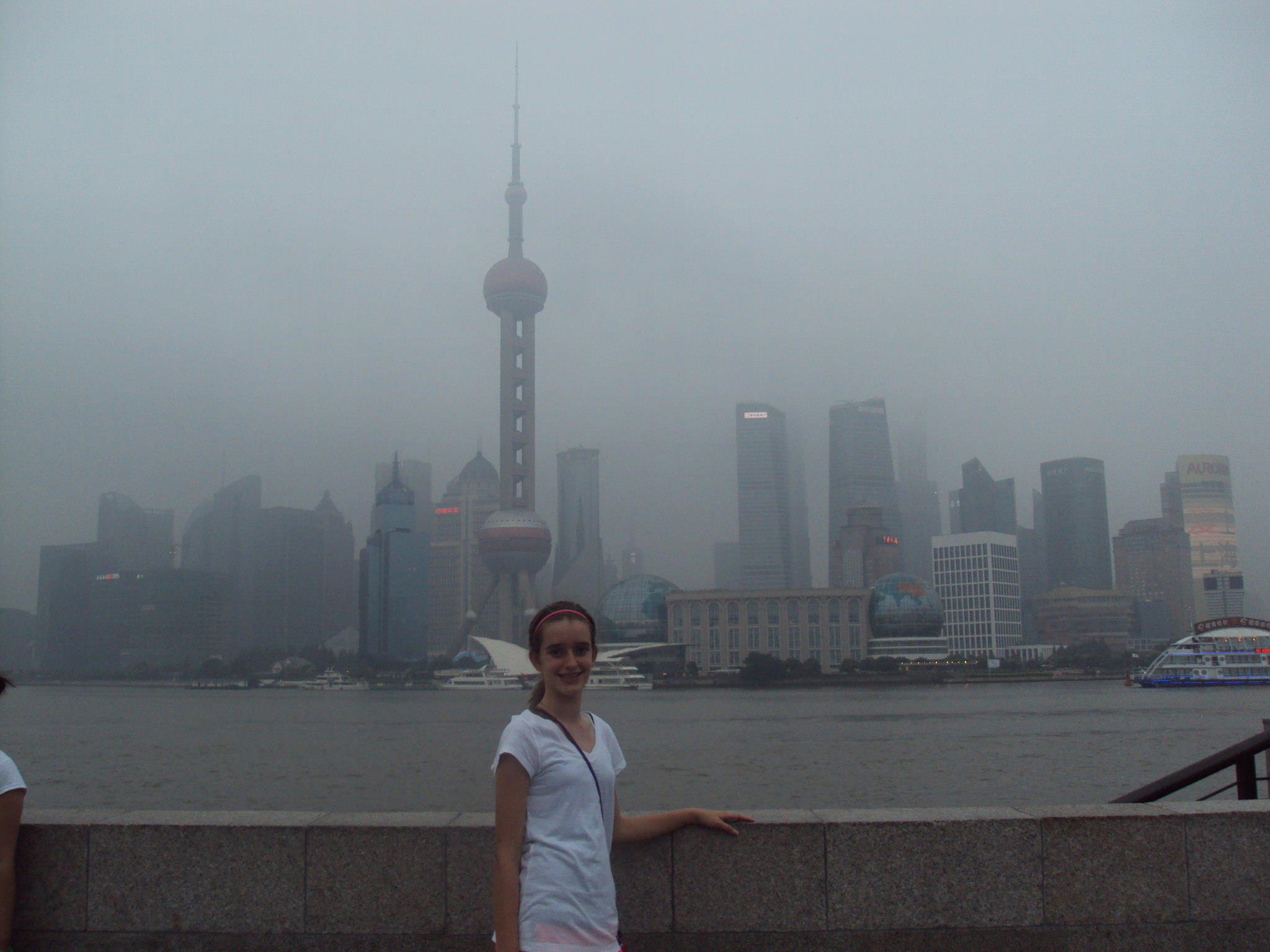
Me on the Bund on a very foggy/smoggy day in 2012.
To make things crazier, we lost one of my classmates, Eli, for a bit. Our professor stood waving his bright red hat around as Chinese tourists formed a large circle around us and took videos and photos. This seems to be a common phenomenon in the larger Chinese cities – Chinese tourists that are unused to seeing foreigners like to get snaps of us, bonus points if they get a photo with us. Eventually, we did find Eli, only after we probably ended up in a few dozen photos.
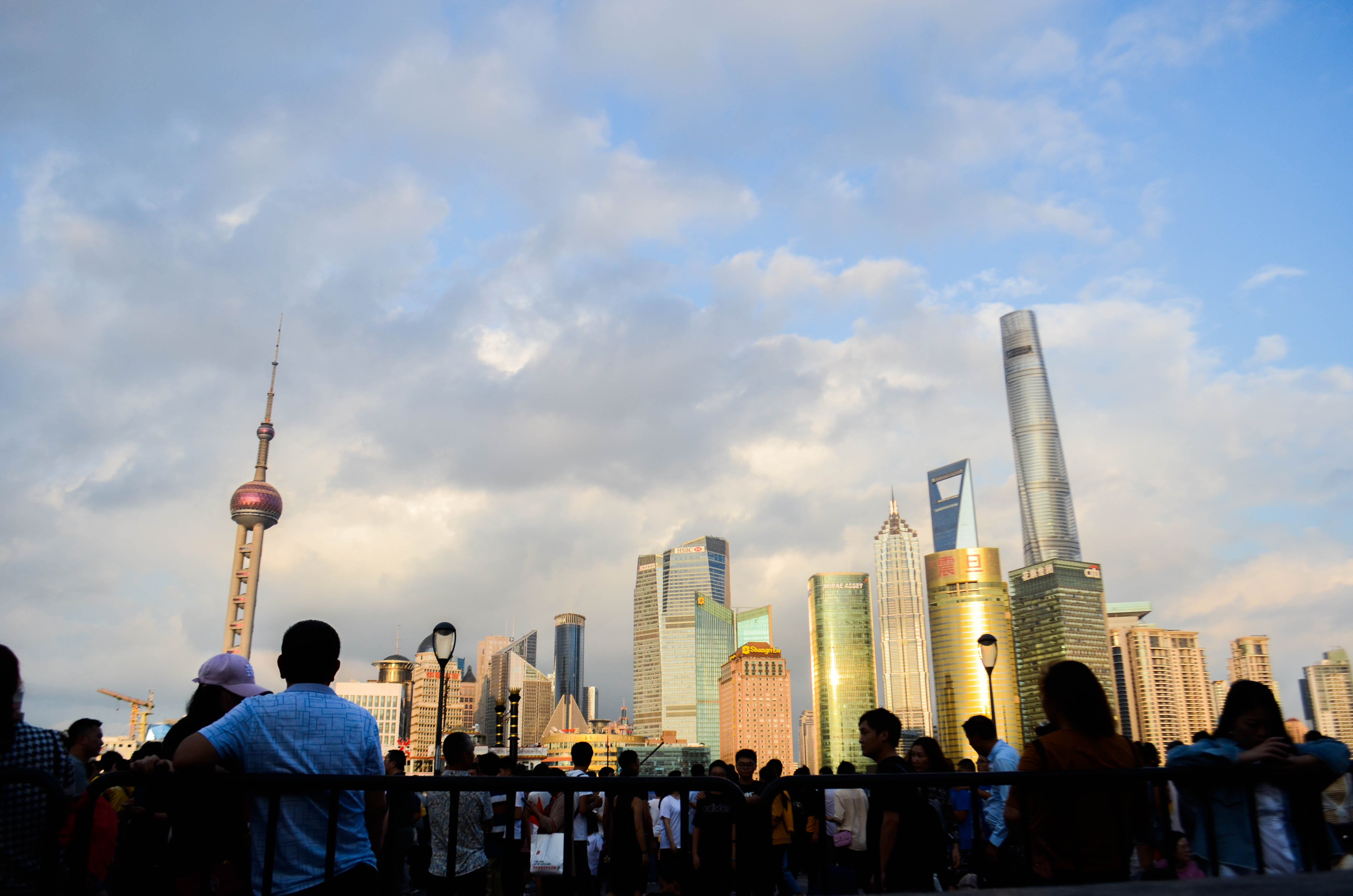
A shot of the Shanghai skyline from the crowded Bund.
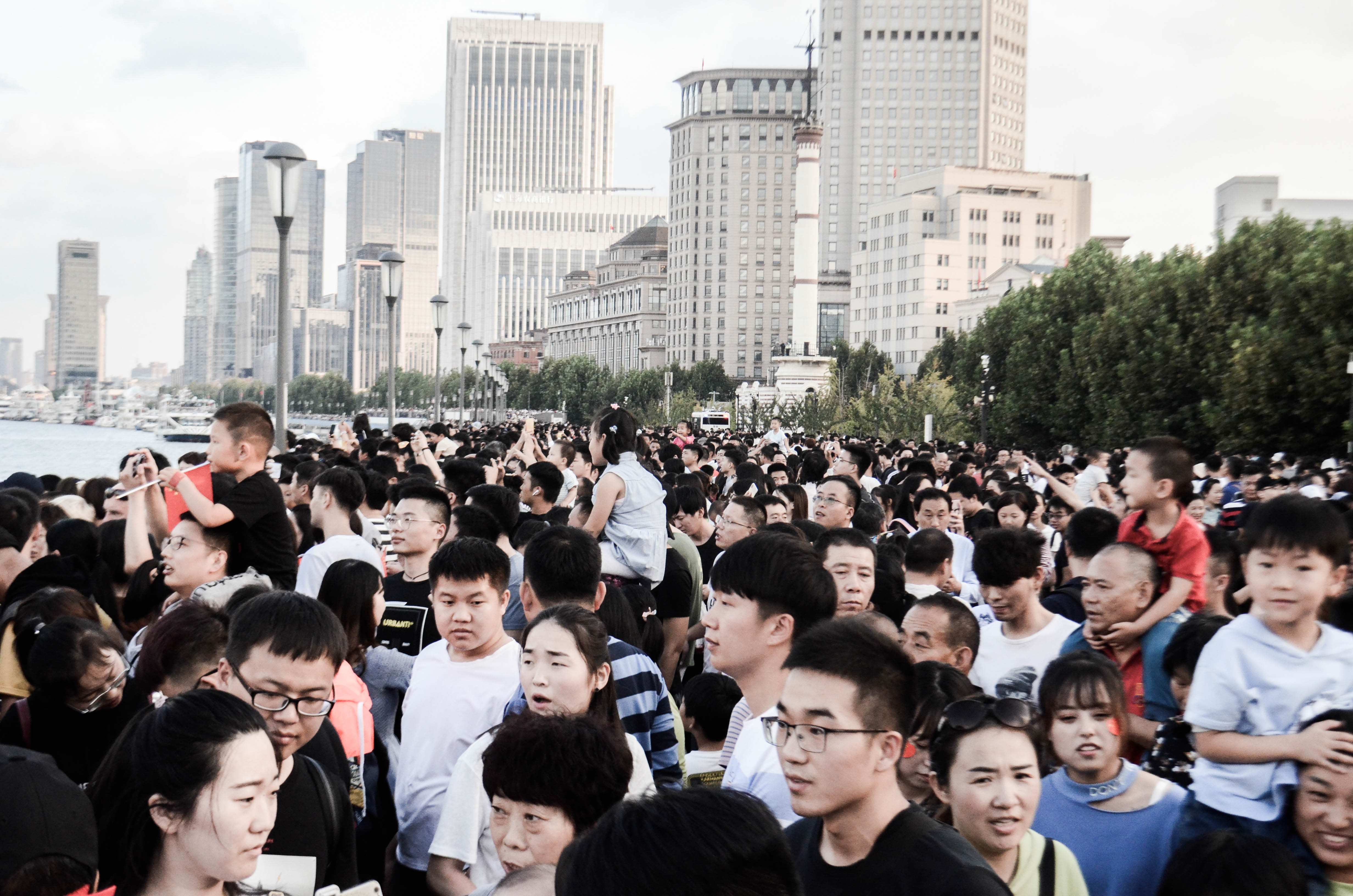
The crowd was like this for as far as the eye could see.
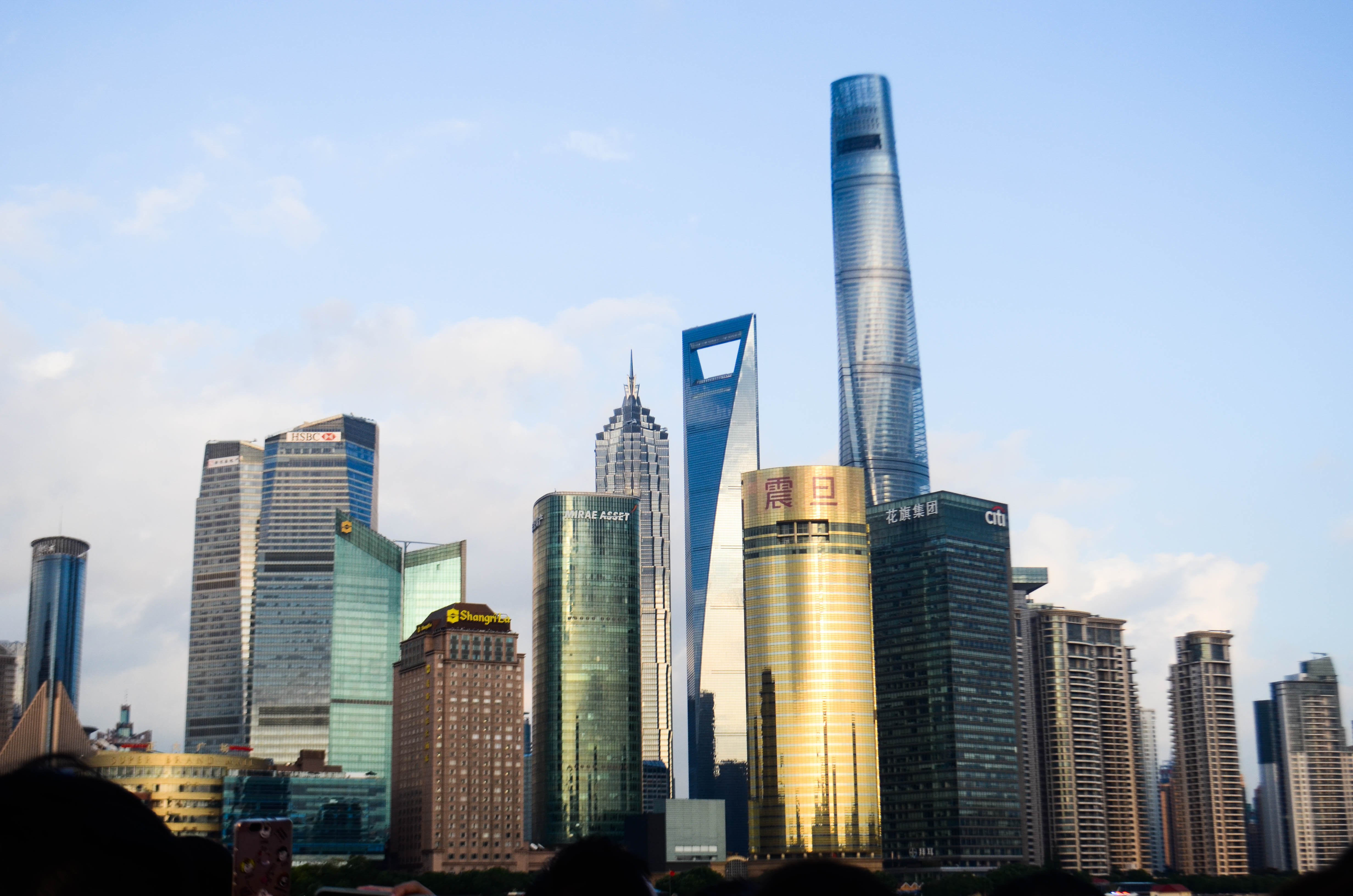
The impressive skyscrapers of the Pudong district of Shanghai.
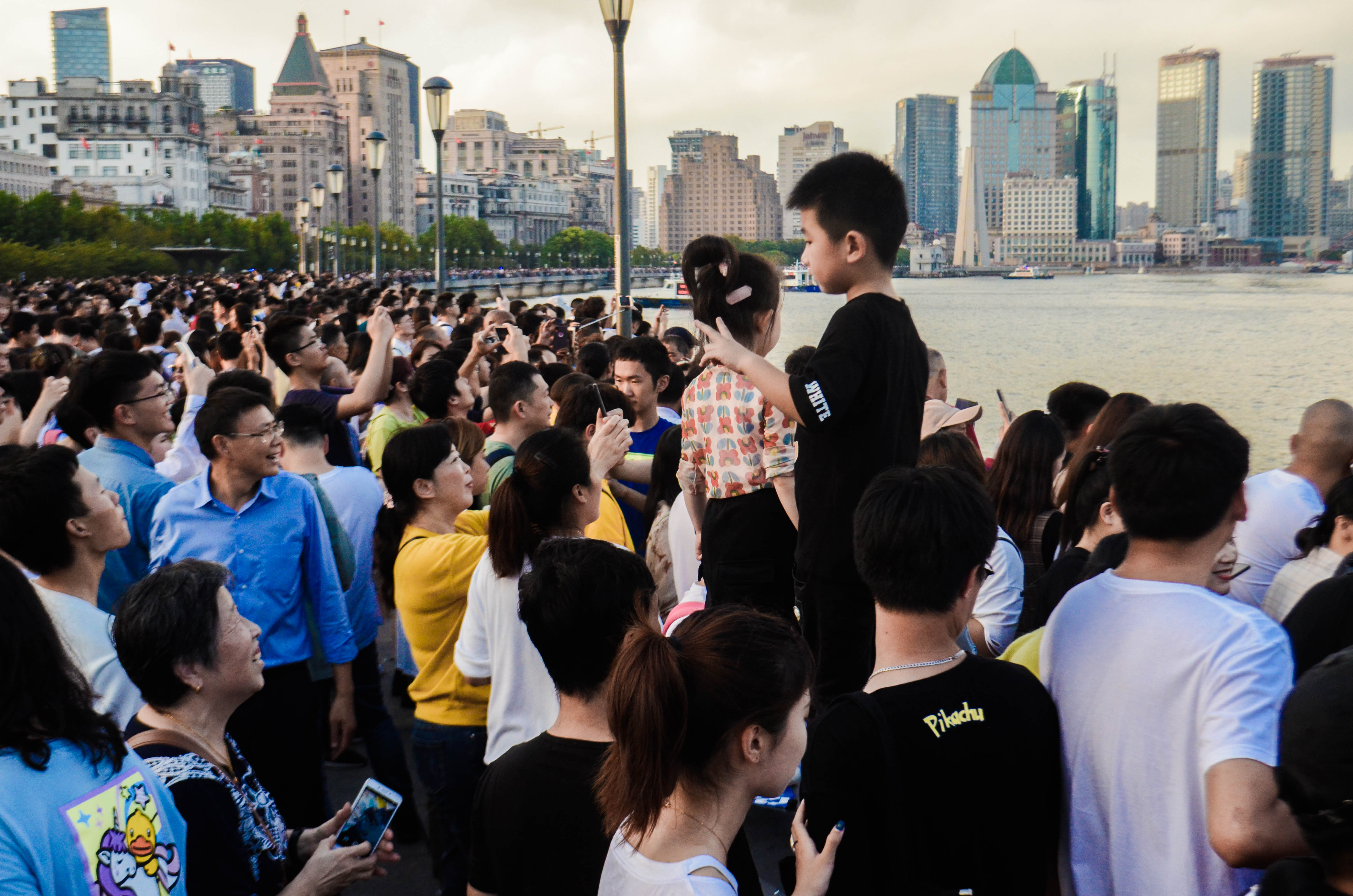
Just to give you an idea of what the crowd was like…
The Shanghai Tower
After escaping the madness of the Bund, we headed across the river to ascend to the top of the Shanghai Tower, the world’s second tallest building at a whopping 632 meters. We waited in line for over an hour to take the world’s 2nd fastest elevator up to the 118th floor observation deck. The view from the top is nothing short of a marvel. Having the entire city of Shanghai laid out beneath you is an overwhelmingly beautiful experience, and visiting at night made it all the cooler.
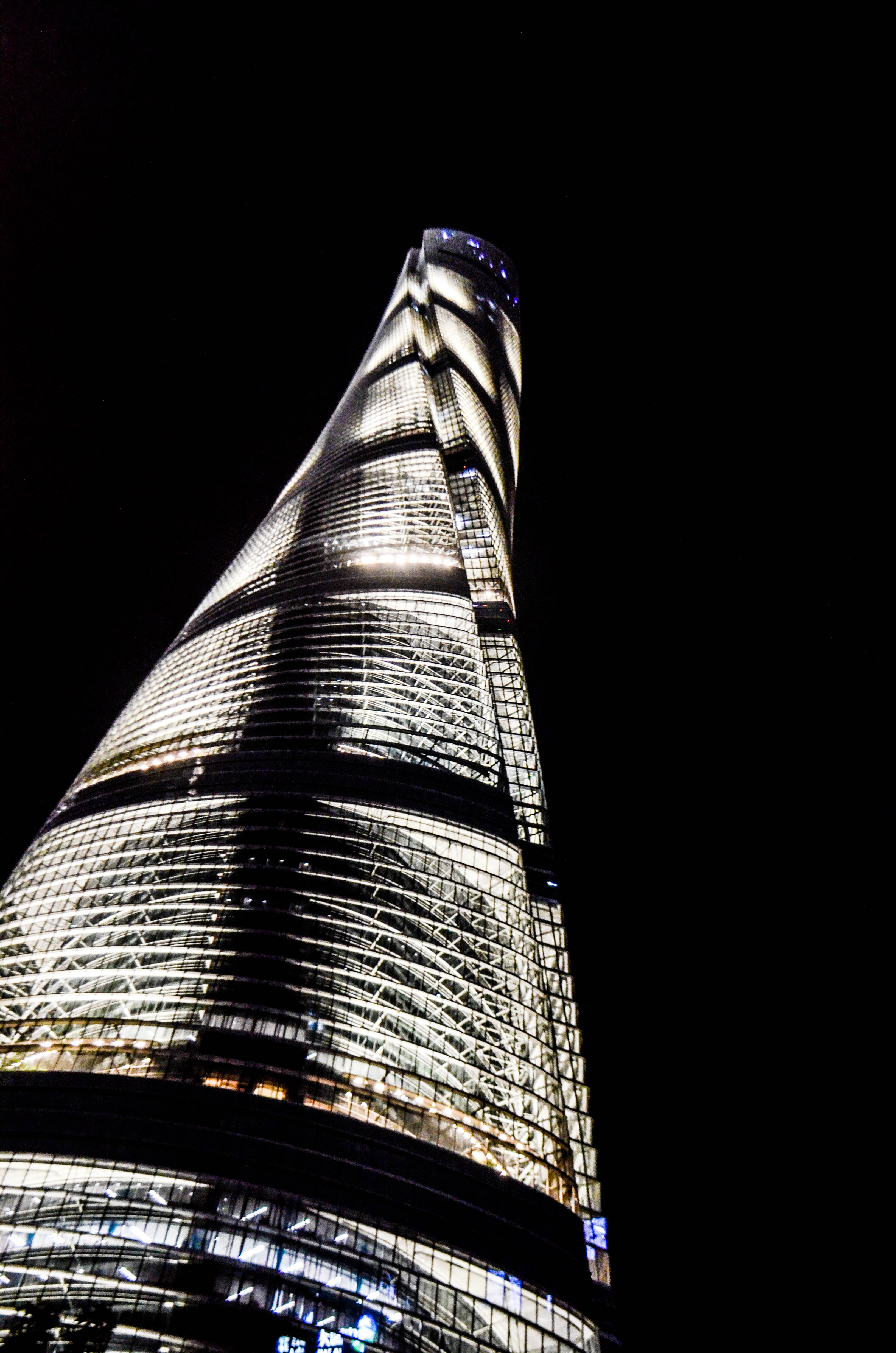
The Shanghai Tower
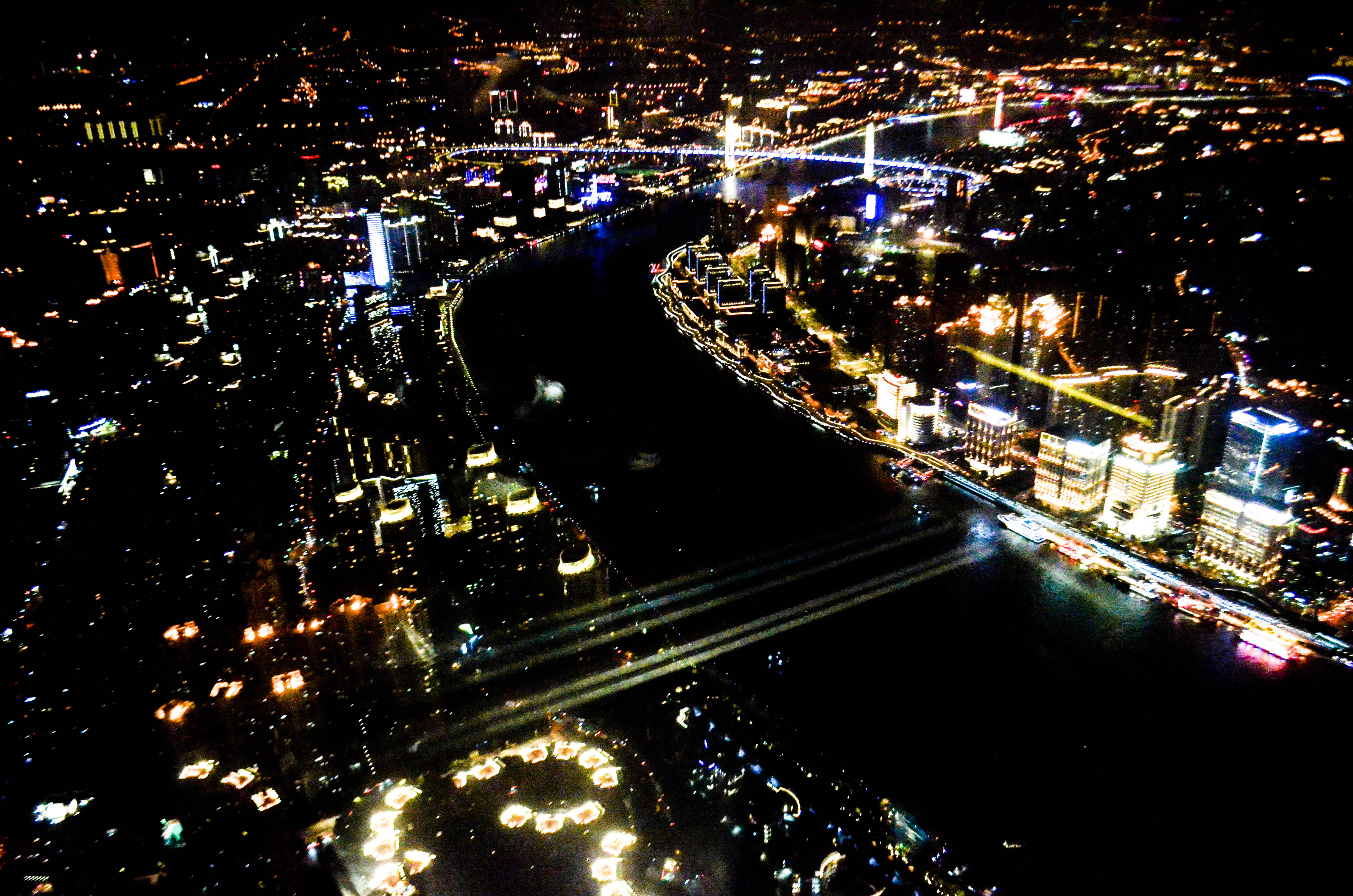
The Huangpu river and the riverfront as seen from the observation deck of the Shanghai Tower.
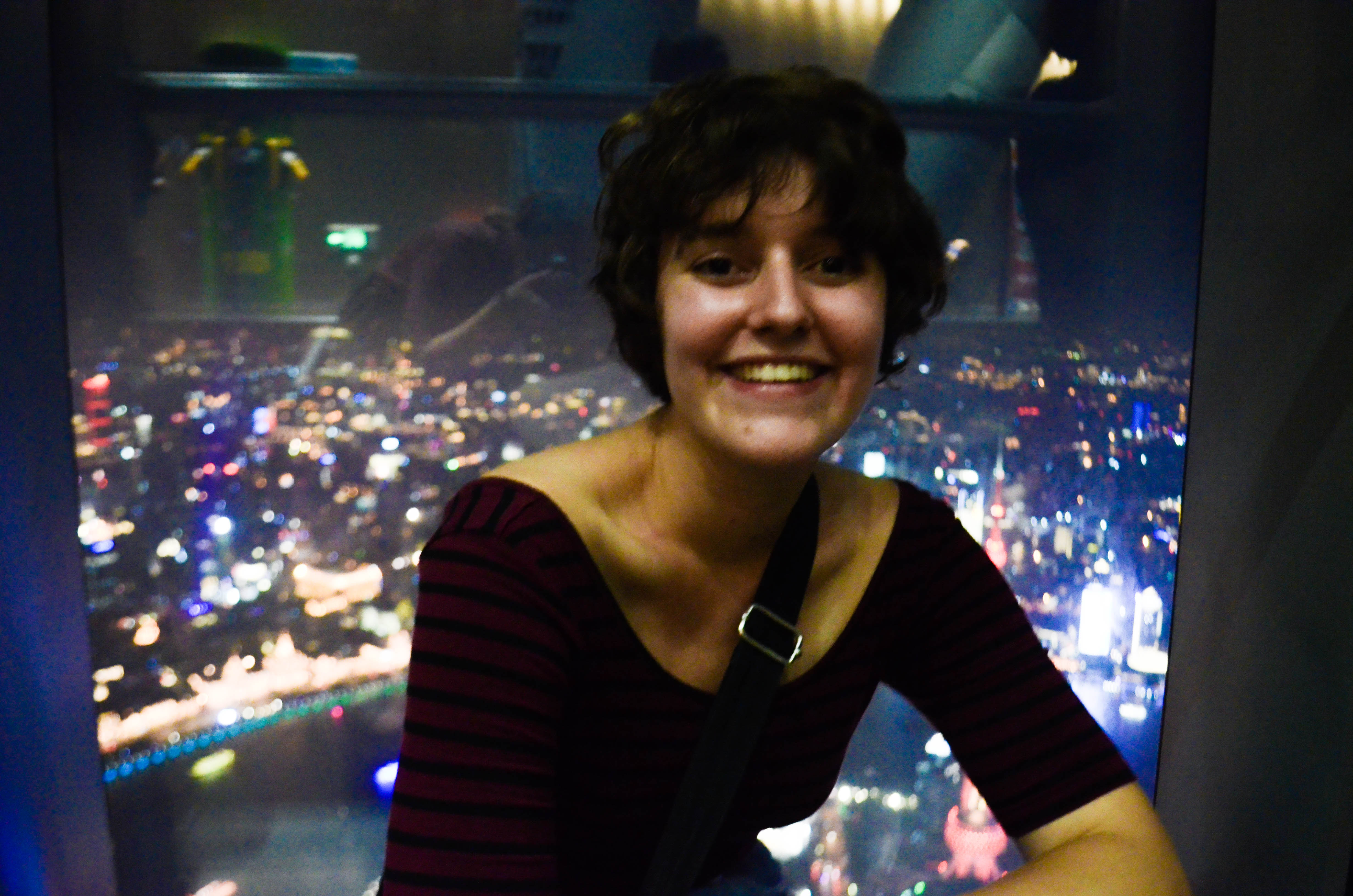
Me from the observation deck of the Shanghai Tower.
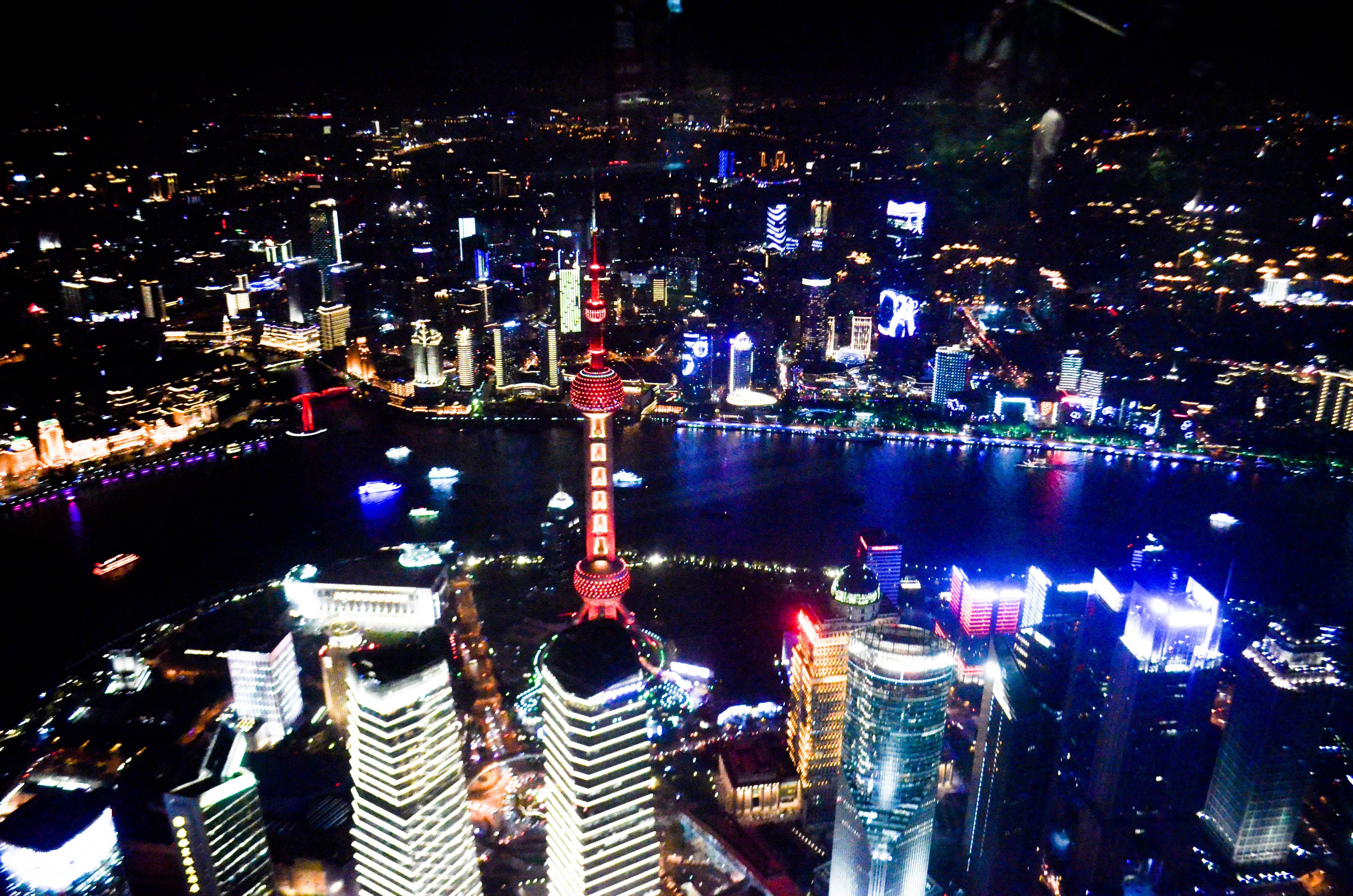
The Pudong district and the riverfront as seen from the observation deck of the Shanghai Tower.
I also went up to the top of the tallest building in China in 2012, but at that point it was the Shanghai World Financial Center, which is 492 meters high. At the time, the Shanghai Tower was under construction and would not be completed until two years later.
- A photo of the Shanghai World Financial Center (middle) and the Shanghai Tower (right) taken this year.
- A photo of the Shanghai World Financial Center that I took in 2012.
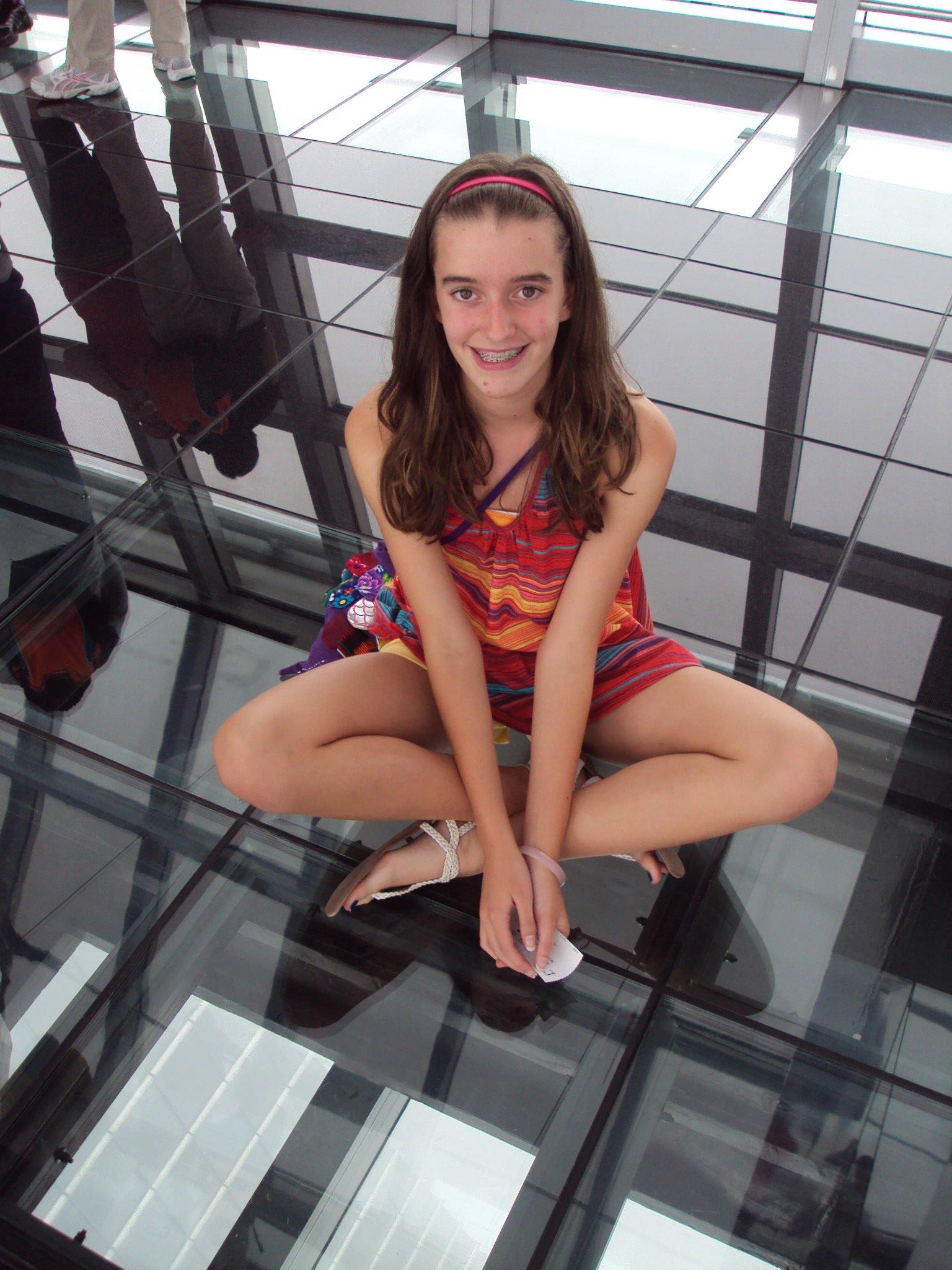
Me sitting on the glass floor of the observation deck of the Shanghai World Financial Center in 2012.
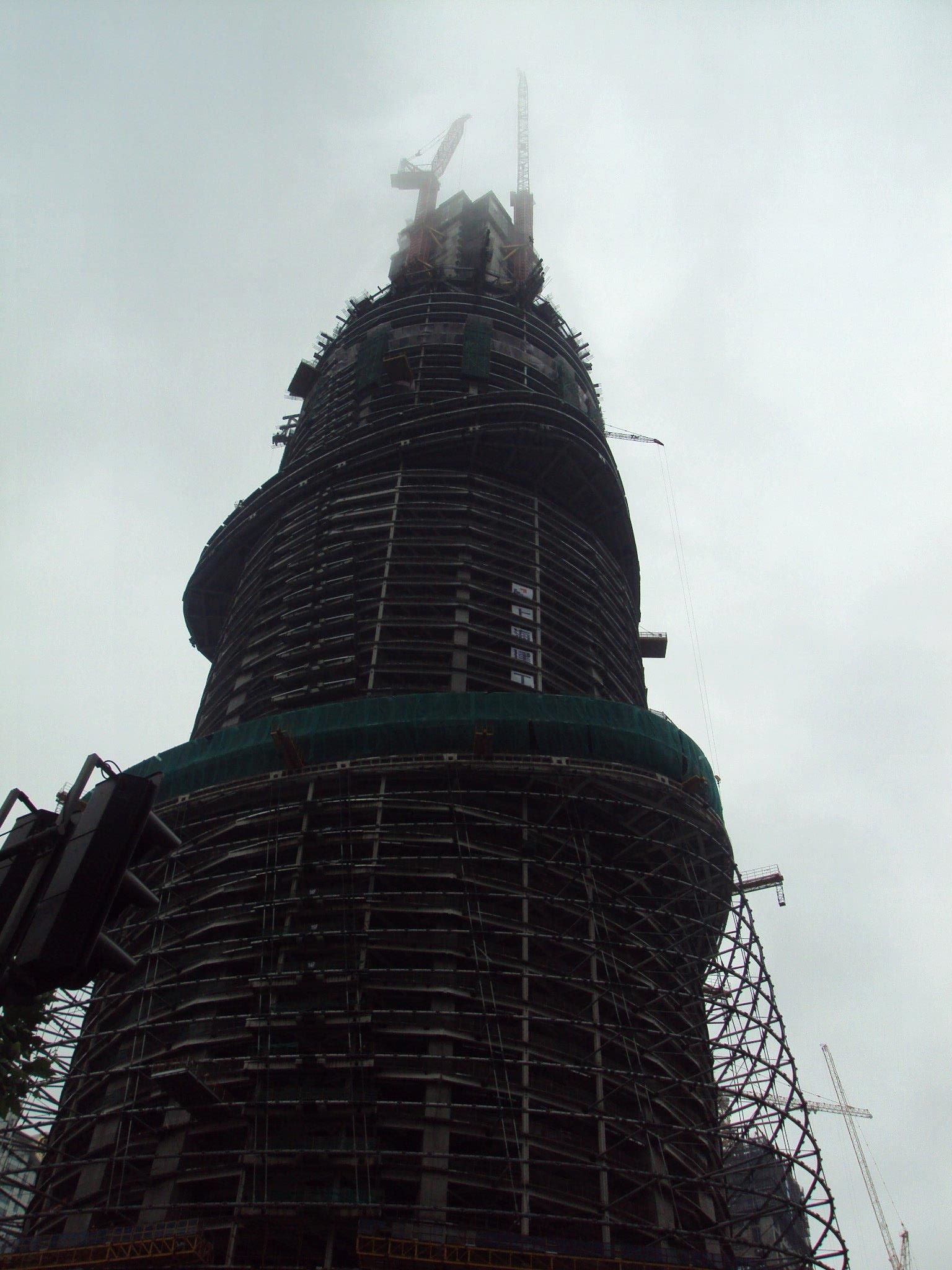
A photo I took in 2012 of the Shanghai Tower being constructed.
An Eco Tour with Green Light Year
Another prime example of Global introducing us to little-known things is our eco tour with Green Light-Year. This organization works to implement solutions to environmental problems on a community level as well as use connections with community members and organizations, the local university, and national and international organizations to educate the public about environmental issues and how to tackle them.
We were able to listen to a presentation about their work from their founder, Huan Ni (Helen). She is an incredible advocate for environmental protection that took her individual solutions to mitigating her carbon footprint to a much larger level by founding this organization and growing its efforts over the last five years. It was amazing to see the community-level efforts being made in the country with the world’s largest environmental impact.
We also had the opportunity to interact with local families from nearby Suzhou – with them we made paper crafts and journeyed to a local farm for lunch, kiwi picking, and to see their aquaponics systems.
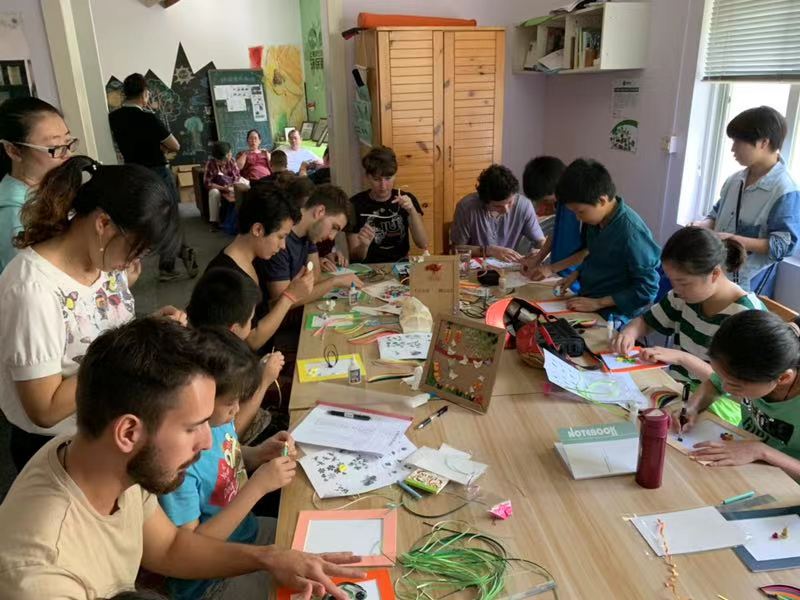
Creating paper crafts with families from Suzhou. Photo by Jimmy of Green Light-Year.

Posing with our paper craft creations. Photo by Jimmy of Green Light-Year.
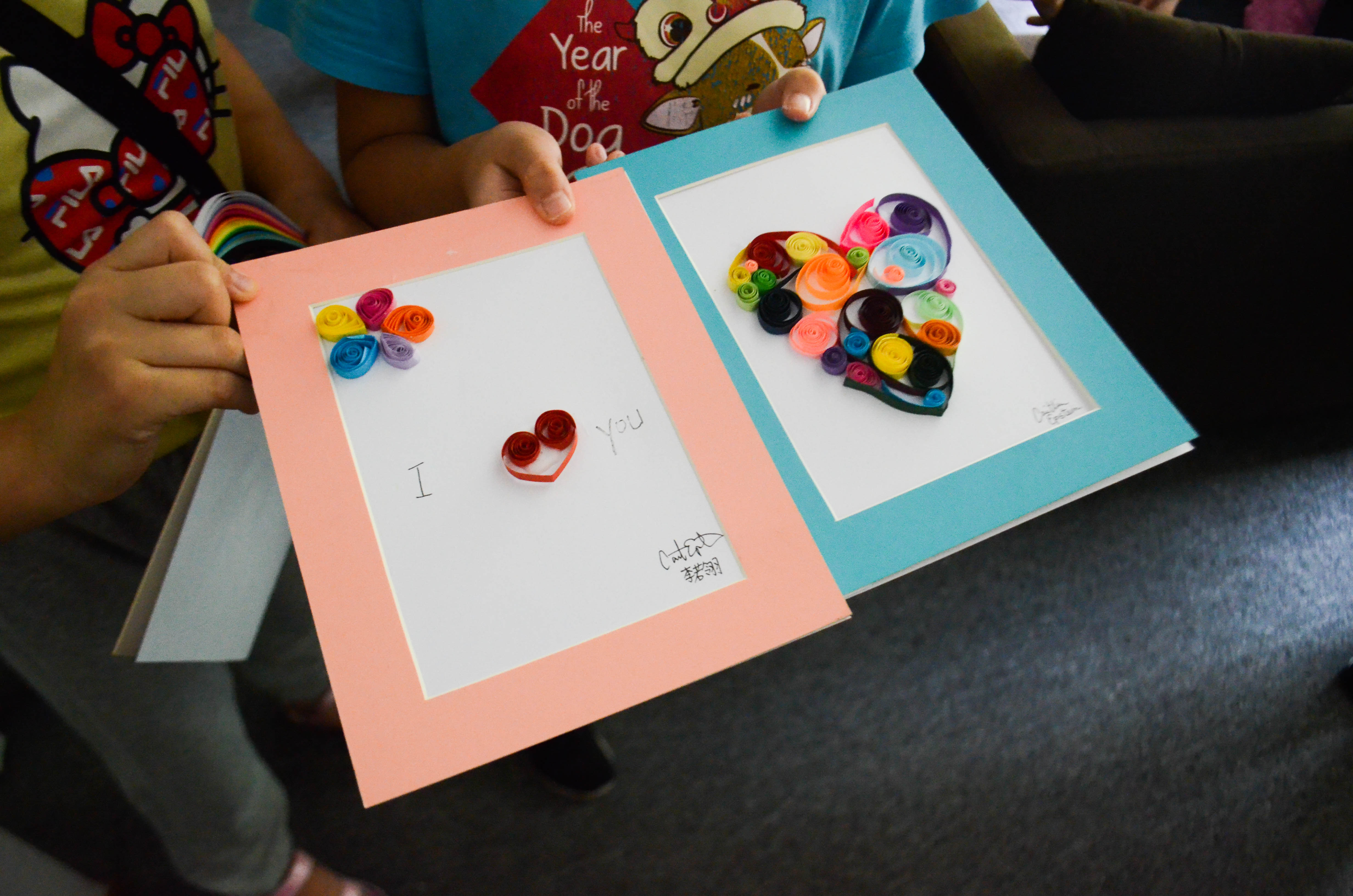
We traded paper crafts with one of the kids from Suzhou. The one on the right is the one I made and the one on the left is the one given to me by a sweet girl named Alice.
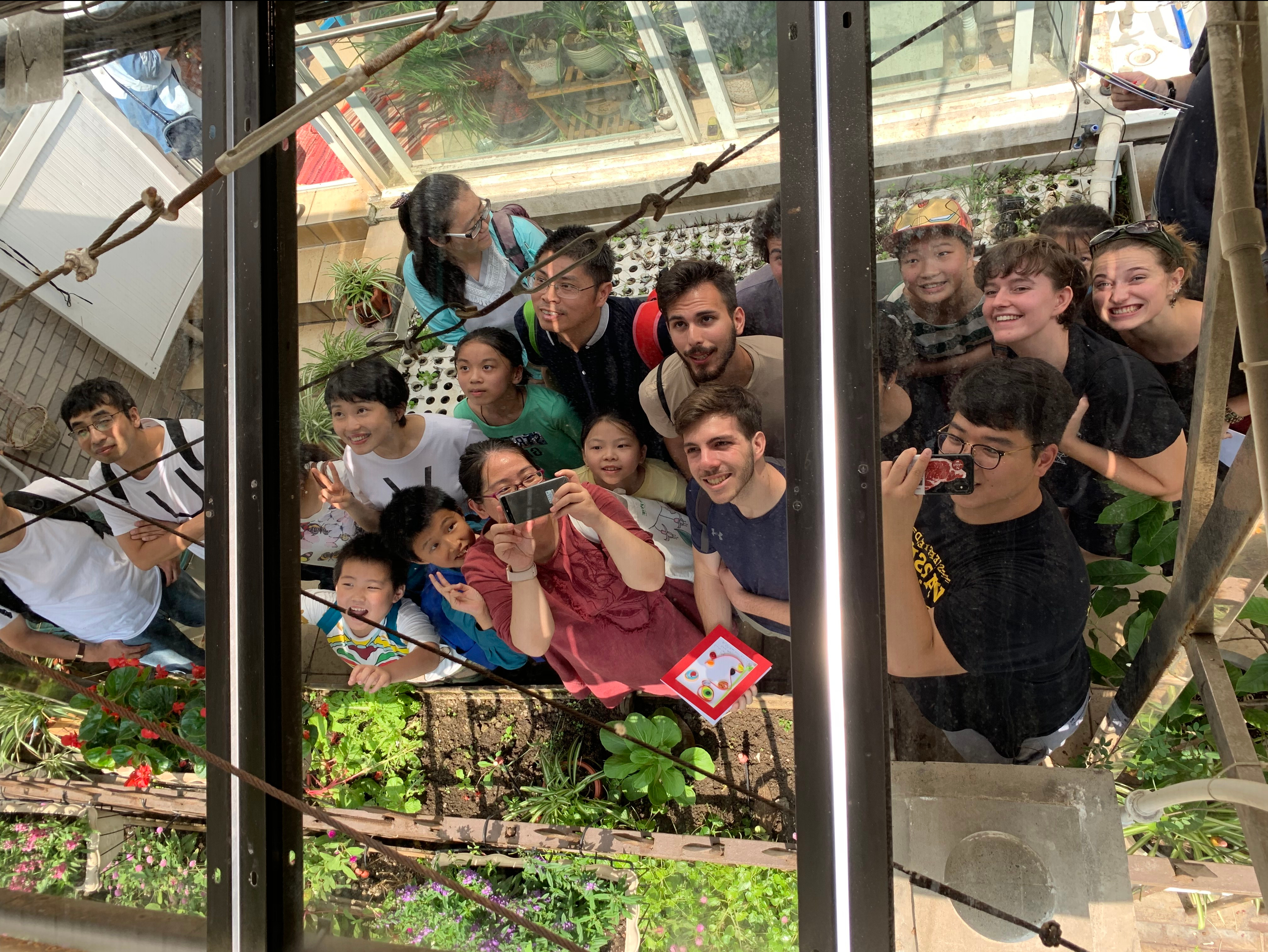
A group selfie in the reflection of Helen’s solar panels. Photo by Jimmy of Green Light-Year.
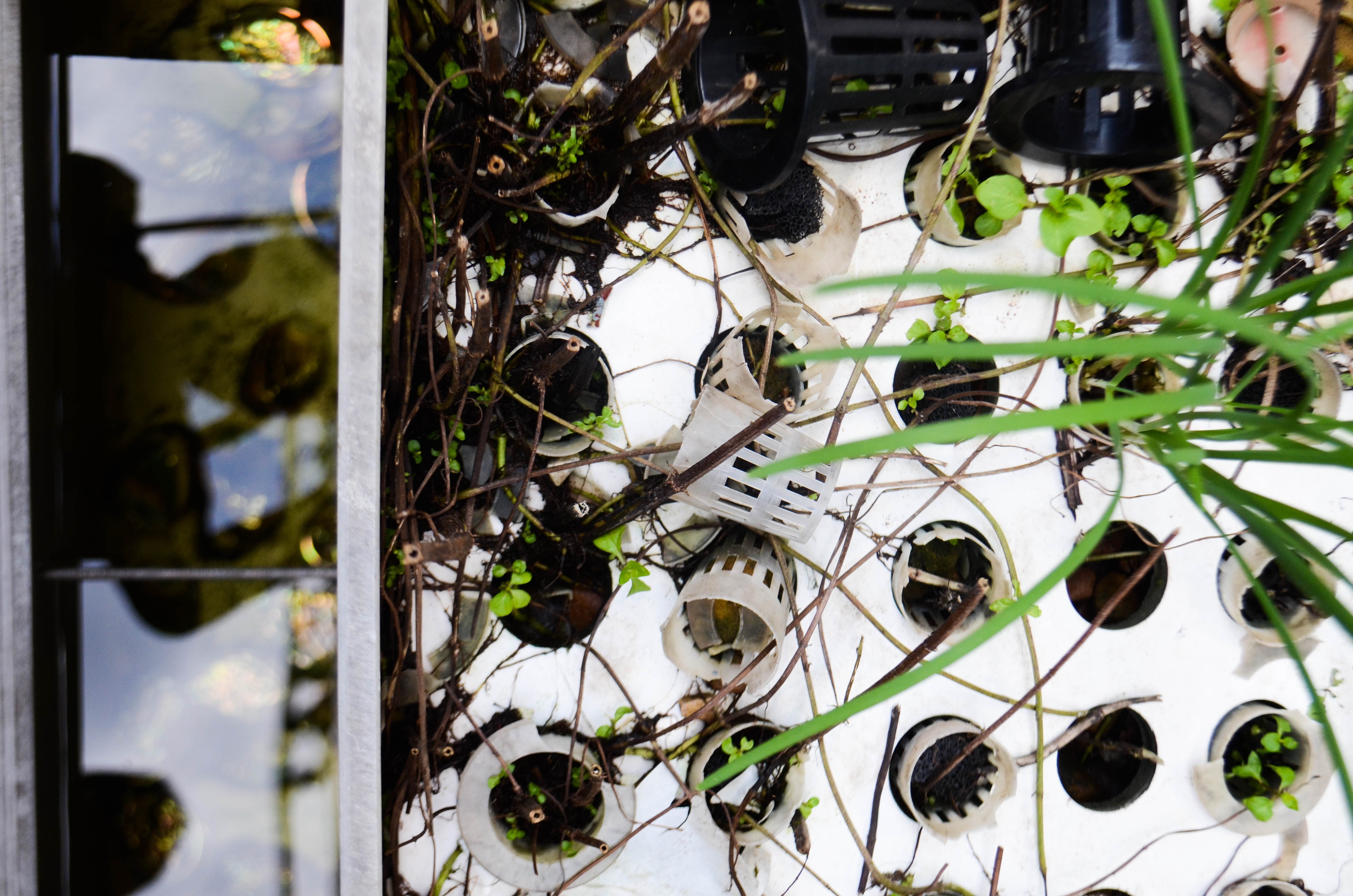
A shot of Helen’s personal aquaponics system.
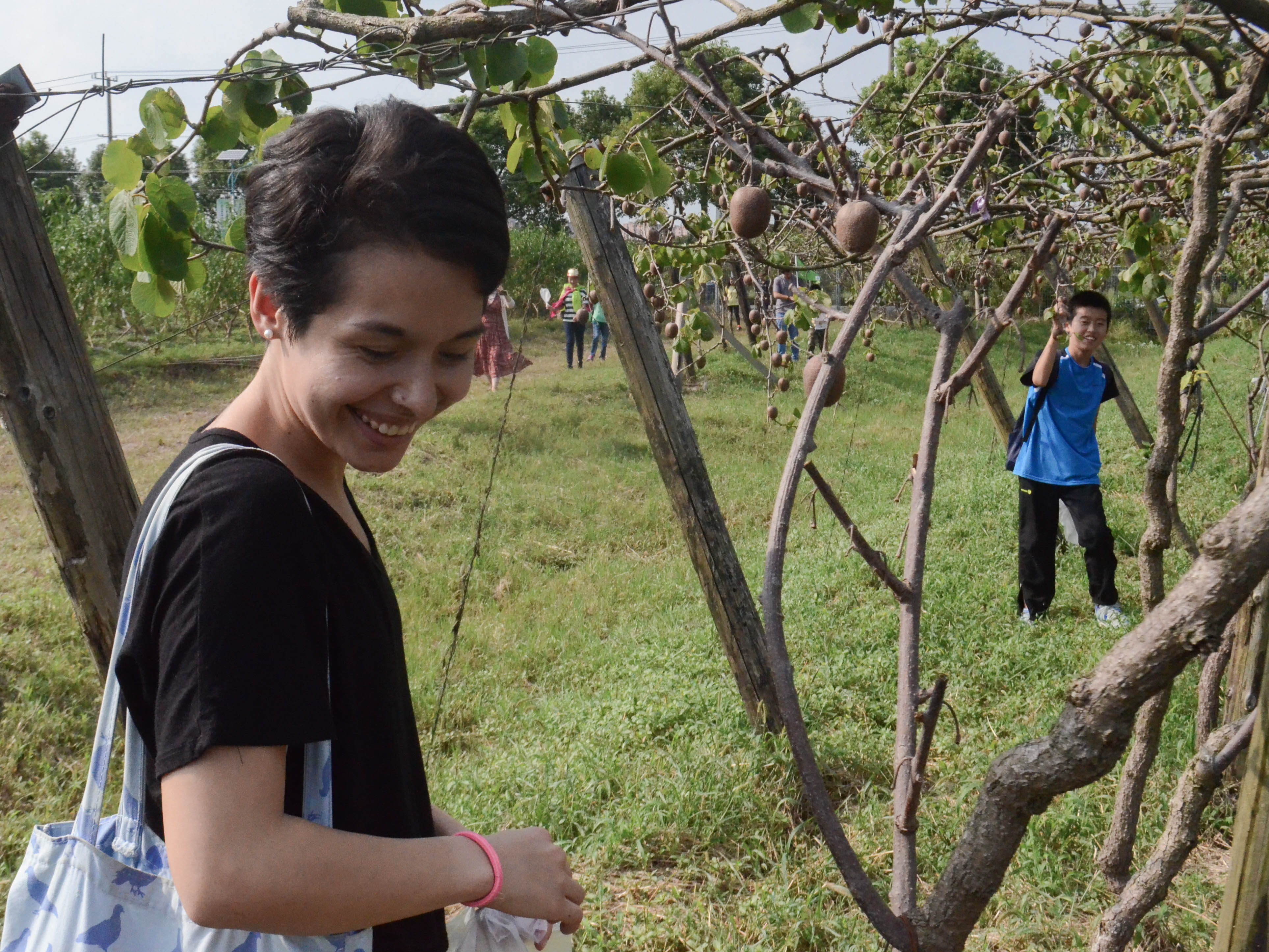
My classmate, Melissa, picking kiwis.
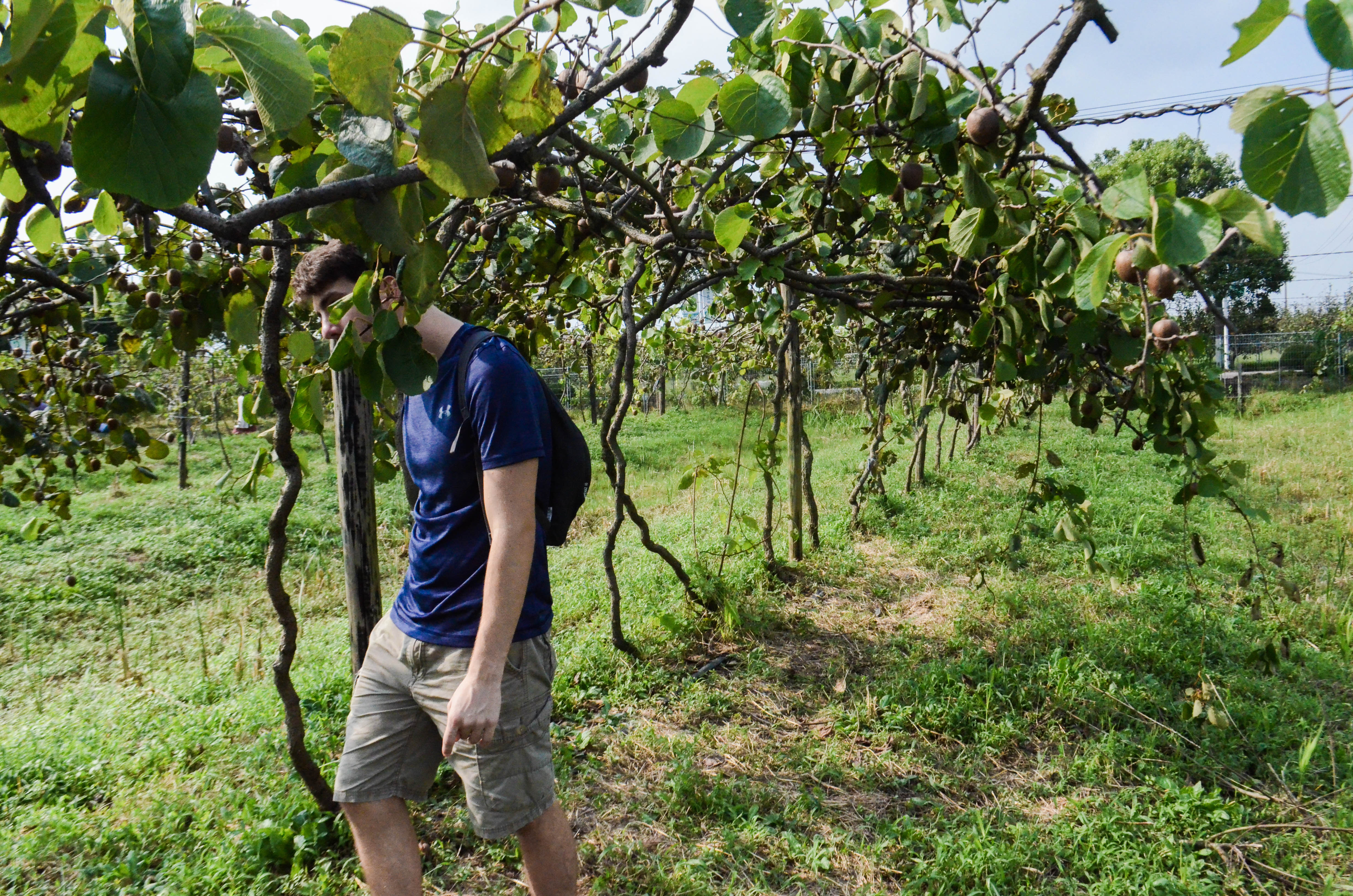
My classmate, Ross, out in the kiwi field.
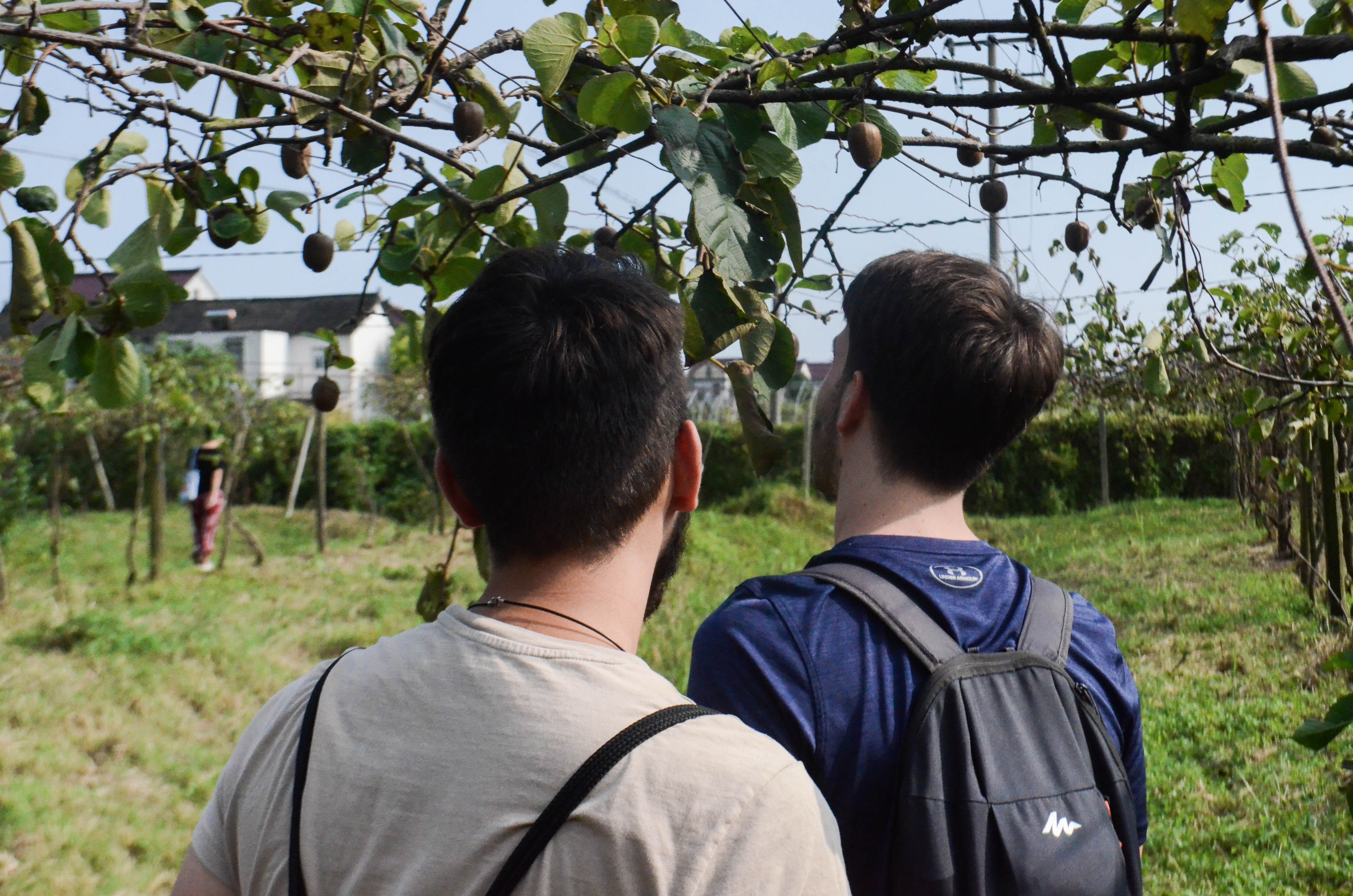
My classmates Ross and Eli out in the kiwi field.

Me picking kiwis.
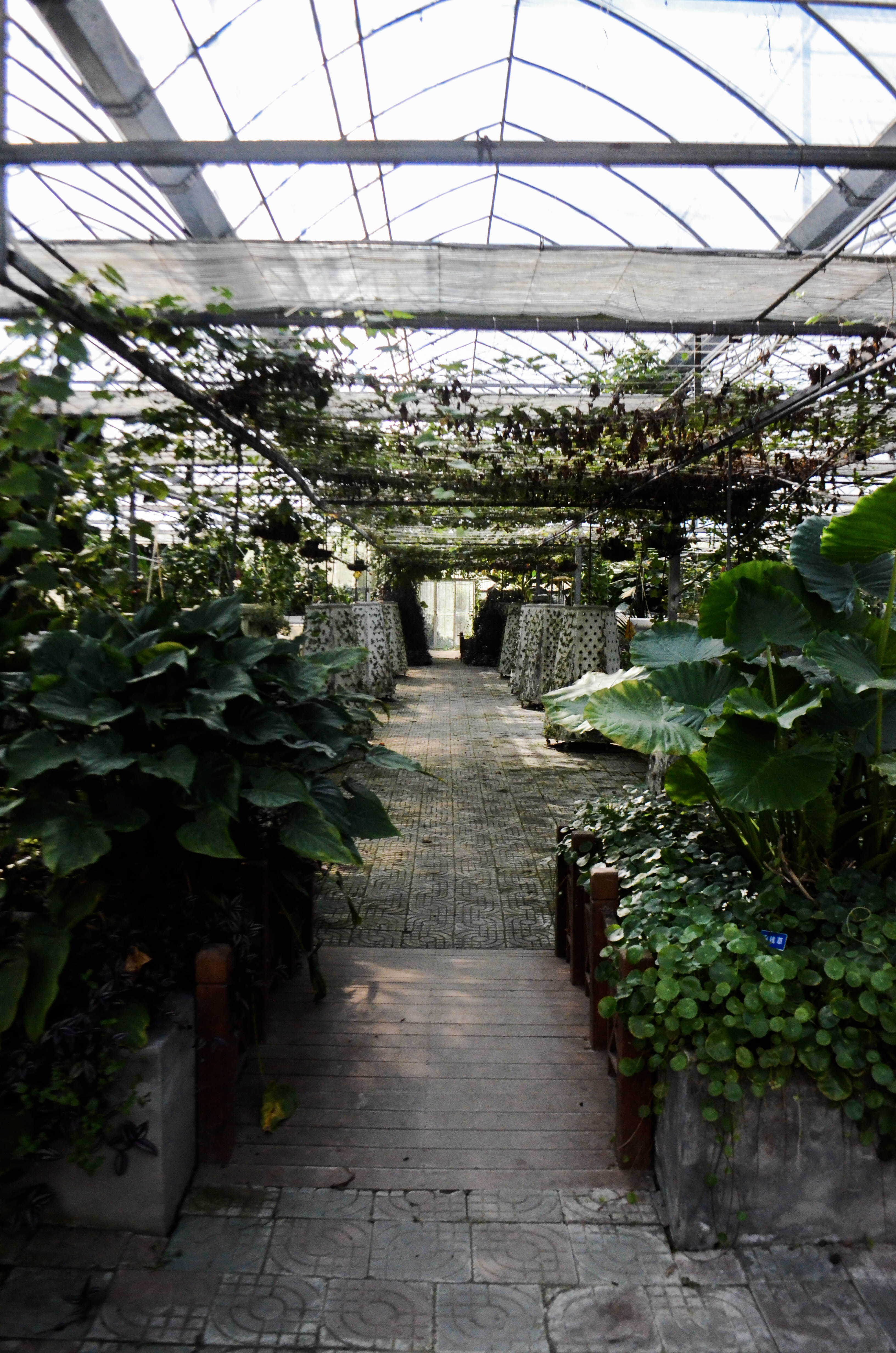
The greenhouse of the farm we visited that uses a large aquaponics system.

We also got to take home these little plants from the farm. Mine miraculously survived the journey back to Hangzhou and is happily sitting on my windowsill.
The Power Station of Art
This gigantic art museum is housed in a former – you guessed it – power station. The space is modern and impressive in its vastness. Unfortunately, there weren’t a ton of exhibits going on during our visit, but we were able to check out the amazing space and some pretty cool art by Chinese artists.
Nanjing Road
The pedestrian area of Nanjing Road is often referred to as Shanghai’s Times Square, and for good reason. The street at night is a glowing testament to consumerism, and it duly crammed with people looking to shop, eat, and admire the lights. We made our way out there one night and quickly meandered up and down the street with thousands of other people.
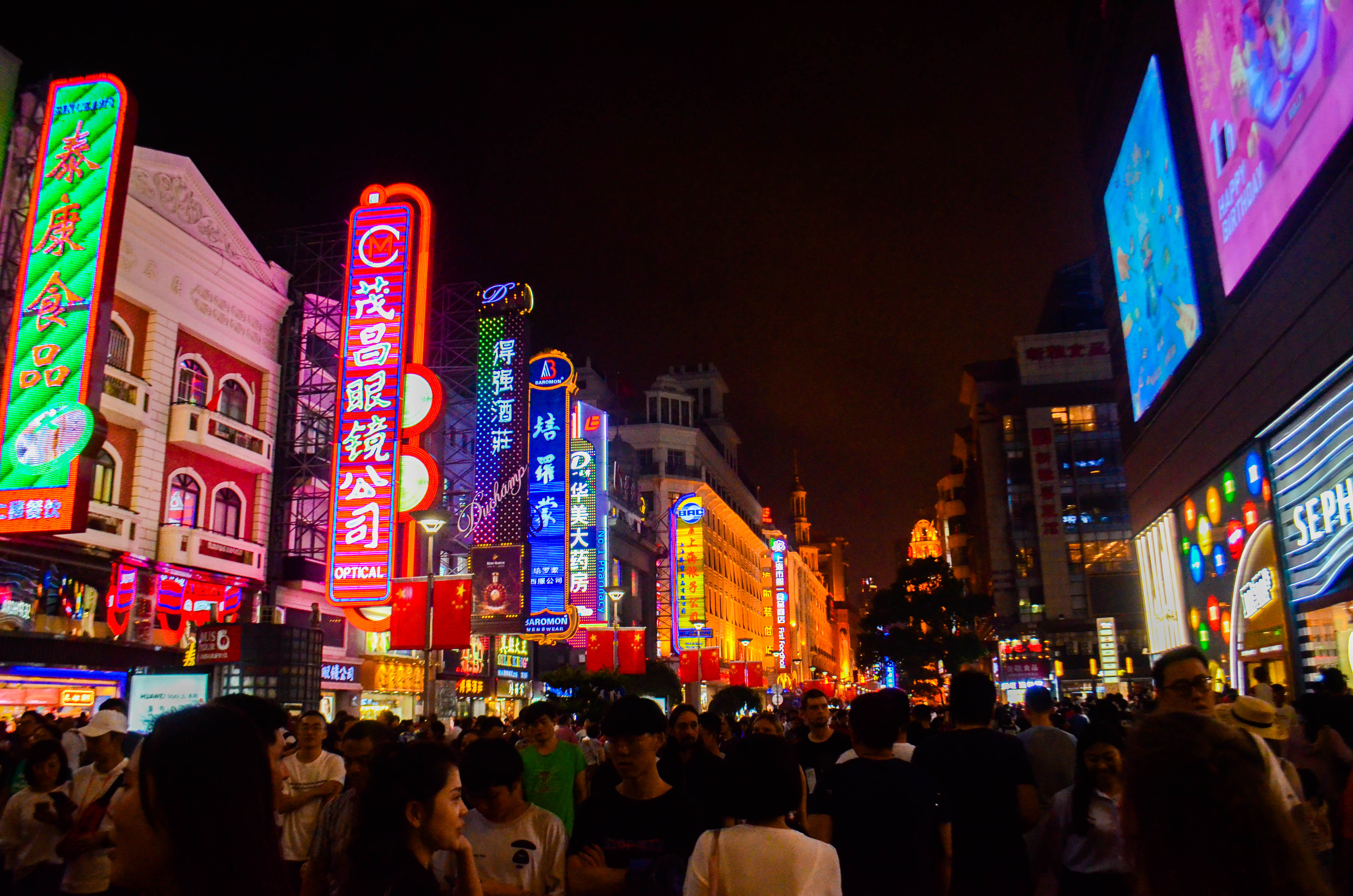
Nanjing Road at night.
The Old City
The Yuyuan Garden area of the city, or the Old City of Huangpu, is where visitors head if they want a glimpse at traditional Chinese architecture and to shop for souvenirs. Unfortunately, while we were there the beautiful Yu Garden was closed, but it was closed for environmental protection so I guess I can forgive the city.
Like other major tourist sites, this area was insanely crowded, and everyone was being herded through cordoned off paths by whistle-blowing police officers. I really hope that the crowd levels were due to national week and not just the new normal because the masses of people really messed with the zen of the beautiful area.

A crowded street lined with beautiful architecture in the Old City of Shanghai.

A look at the buildings surrounding the Yu Garden of Shanghai.
Our time in Shanghai featured your typical tourist stops and some more off the beaten path experiences, and everything added up to an exhaustingly busy but wonderful time in an astoundingly fast-paced city. Time in this modern marvel of a mega city is unlike any other, and I am glad to have visited it twice now with a good likelihood of more trips in my future.
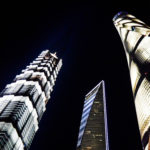
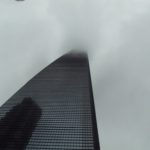
Nice job of reporting on the city and its many aspects. Great pics! Stay safe.
Thank you so much for that beautiful and informative description of your visit to Shanghai. The diversity of the city is amazing, from the old Chinese architecture to the incredible skyscrapers. Most of us may never get there and you’ve been twice! WOW!!